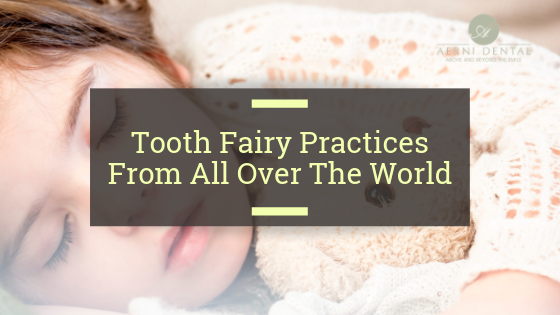We can all remember times from our childhood years when the Tooth Fairy traded cash for our precious baby teeth.
This is a well-loved practice for American families, and the Tooth Fairy is also a good story for parents to use when attempting to persuade their children to keep excellent maintenance of their teeth. In fact, author Vicki Lanksy discovered that children were even more dedicated to maintaining great oral hygiene if their parents convinced them that the Tooth Fairy paid more for perfect teeth. However, did you know that the Tooth Fairy that we are familiar with is largely exclusive to Americans? Furthermore, unlike Santa Claus and the Easter Bunny, the foundations of this particular tradition are quite unidentified.
Who Is The Tooth Fairy Consultant?
Rosemary Wells, an educator from the Northwestern University Dental School, decided to do some investigation on the strange inceptions of the Tooth Fairy. What she encountered was that the Tooth Fairy was not as ancient as was traditionally believed. The oldest oral indication of this fairy happened near the turn of the 20th century, and the very first appearance in print occurred in 1927. Wells moved ahead with her investigation for a long time and she even organized a nationwide inquiry that included close to 2,000 parents. Among the most significant of Wells’ feats is the museum that she has established that features all of her research and findings. And where is this museum? It’s inside of Wells’ Illinois home. Her business card even proclaims her as the official “Tooth Fairy Consultant.”
Across the World
Whilst the approach of the pop culture Tooth Fairy has its beginnings in American society, the procedures around lost baby teeth can vary from country to country. Girls and boys from Russia, New Zealand, France, and Mexico keep their baby teeth under their pillow in the hopes that a mouse or rat will change it out for cash or candy. The notion with this theory is that the young ones’ teeth are going to grow back as strong as a rodent’s. Many societies’ concepts of the Tooth Fairy imply a mouse or rodent, although it relies on the area; if the child leaves their tooth beneath their pillow or if they keep it out for the rodent to take. The French call this figure La Petite Souris, whereas the Spanish named it Ratoncito Perez.
Other types of common beliefs involve plunging the lost tooth in a cup of water or milk– and even wine– and keeping it on the night table. Tannfe, the Norwegian tooth fairy, favors the teeth in clear water because her old and tired eyes can’t discover the tooth anywhere else. Additionally, whenever the child awakes in the morning, a silver coin will be at the bottom of the glass. For Irish boys and girls, the tooth fairy is a young leprechaun named Anna Bogle who unintentionally lost her front tooth. She uses kids’ lost teeth to substitute her lost teeth, and in exchange, she leaves behind a polished gold coin. On the other hand, in Asian countries, boys and girls will throw teeth lost from the lower jaw onto the roof of their house, and teeth lost from the upper jaw will be thrown inside the space beneath their house. Usually, the children will proclaim a desire for sturdy, healthy teeth to evolve in its place.
There are several civilizations that handle the practice of lost teeth with an air of caution. For example, in Austria, kids used to stash their teeth in the environments surrounding their household. This was carried out to guard the young children just because Austrians felt that if a witch obtained a child’s tooth, that child could easily become cursed. Yet, Viking fighters thought their children’s teeth carried blessings throughout a battle, and they frequently made jewelry out of the teeth to wear to war.
Realistic Approaches to the Tooth Fairy
It could be argued that the practice of these various tooth fairy rituals can aid young children to get over the fear of losing teeth, and also offer contentment at the time of this brand new experience. Anthropologist Cindy Dell Clark has insisted that a young child receiving cash for their lost tooth is the first transition into maturity because making money in adulthood is an exercise in responsibility and agency.
Rosemary Wells and Cindy Dell Clark are not the only ones who have been analyzing and researching the outcomes of the tooth fairy. In 2013, Visa reported that the normal amount left for a tooth in the United States was $3.70. Visa’s senior director of global financial education Jason Alderman has explained: “It is due to a combination of things: one is a reflection of an improving economy, and that parents feel they can afford to be generous in small areas.”
Our team wants to know what you believe! Did you have a unique tooth fairy tradition as a kid? What amount did the Tooth Fairy leave for you? Also, Dr. Aerni wants to remind all parents that setting up effective dental hygiene routines for your kids can have lifelong impacts on your child’s oral health. For more information on this, you can read Dr. Aerni’s blog here.


